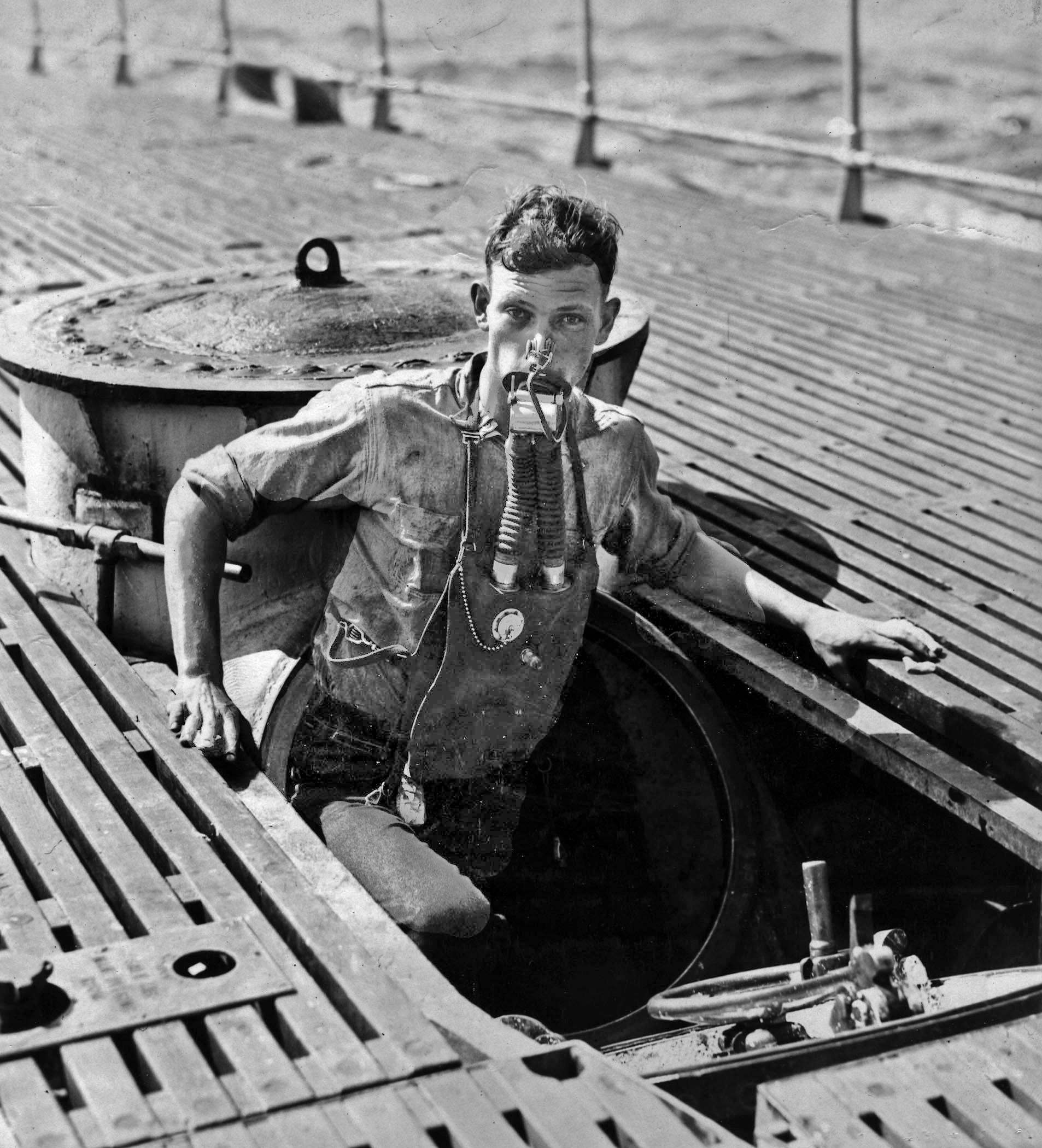Momsen lung on:
[Wikipedia]
[Google]
[Amazon]

 The Momsen lung was a primitive underwater rebreather used before and during World War II by American submariners as emergency escape gear. It was invented by
The Momsen lung was a primitive underwater rebreather used before and during World War II by American submariners as emergency escape gear. It was invented by
History of the Momsen Lung"Submarine Safety Device Proven."
''Popular Science Monthly'', September 1929, pp. 30–31. * {{Underwater diving, divequ Rebreathers Industrial breathing sets Submarine rescue equipment

 The Momsen lung was a primitive underwater rebreather used before and during World War II by American submariners as emergency escape gear. It was invented by
The Momsen lung was a primitive underwater rebreather used before and during World War II by American submariners as emergency escape gear. It was invented by Charles Momsen
Charles Bowers Momsen (June 21, 1896 – May 25, 1967), nicknamed "Swede", was born in Flushing, New York. He was an American pioneer in submarine rescue for the United States Navy, and he invented the underwater escape device later called the " ...
(nicknamed "Swede"). Submariners trained with this apparatus in an deep Escape Training Tank at New London, Mare Island, or Pearl Harbor. It was introduced as standard equipment on ''Porpoise'' (P)-class and ''Salmon''-class boats.
The device recycled the breathing gas by using a counterlung containing soda lime to remove the carbon dioxide. The lung was initially filled with oxygen and connected to a mouthpiece by twin hoses containing one-way valves, one for breathing in and the other for breathing out.
The only known emergency use of the Momsen lung was during the escape from on October 25, 1944. Thirteen men (of thirty survivors) left the forward escape trunk
An escape trunk is a small compartment on a submarine which provides a means for crew to escape from a downed submarine; it operates on a principle similar to an airlock, in that it allows the transfer of persons or objects between two areas of d ...
: five were picked up by the Japanese; three more reached the surface "but were unable to hang on or breathe and floated off and drowned"; the fate of the other five is unknown. Not all the escapees from the trunk used the Momsen lung. An officer had his mouthpiece knocked out shortly after leaving the submarine. One of the trunk ascents was made without a Momsen lung. Many were unable to leave the trunk or discouraged from attempting an escape. Most of the crew perished.
The Momsen lung was replaced by the Steinke hood
A Steinke hood, named for its inventor, Lieutenant Harris Steinke, is a device designed to aid escape from a sunken submarine. In essence, it is an inflatable life jacket with a hood that completely encloses the wearer's head, trapping a bubble ...
beginning in 1962. The British Royal Navy used the similar Davis Submerged Escape Apparatus
The Davis Submerged Escape Apparatus (also referred to as DSEA), was an early type of oxygen rebreather invented in 1910 by Sir Robert Davis, head of Siebe Gorman and Co. Ltd., inspired by the earlier Fleuss system, and adopted by the Royal Nav ...
, but it was clumsy to use. They adopted the practice of "blow and go
An emergency ascent is an ascent to the surface by a diver in an emergency. More specifically, it refers to any of several procedures for reaching the surface in the event of an out-of-air emergency, generally while scuba diving.
Emergency asc ...
" in which the sailor would exhale before ascent to avoid air over-expanding the lungs, which could cause them to rupture. This has since been found to be higher risk than a constant relaxed exhalation during ascent. Walter F. Schlech, Jr. and others examined submerged escape without breathing devices and discovered that ascent was possible from as deep as . One writer suggested that "the Momsen Lung concept may have killed far more submariners than it rescued".Blair, p. 768fn.
See also
* * *References
External links
*US NavHistory of the Momsen Lung
''Popular Science Monthly'', September 1929, pp. 30–31. * {{Underwater diving, divequ Rebreathers Industrial breathing sets Submarine rescue equipment